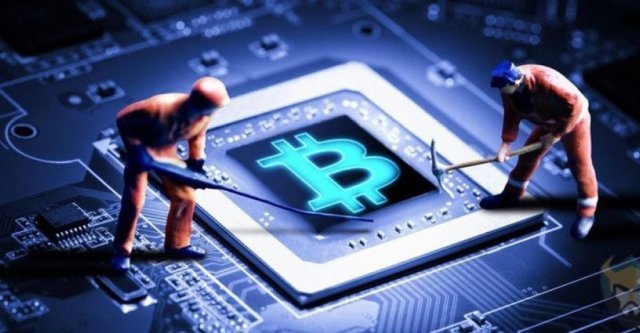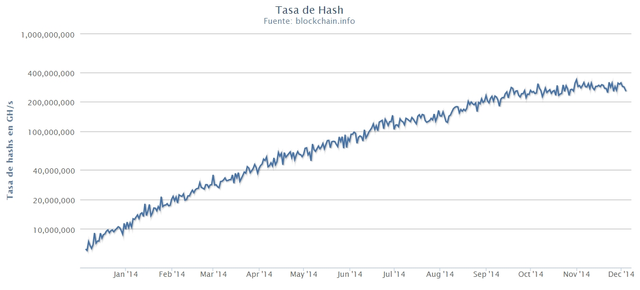Crypto Academy Week 4 Homework Post for [@besticofinder] - [ENG - ESP]
ENGLISH
Introduction to Cryptocurrency Mining | Steemit Crypto Academy | Lesson 4
Hello everyone!! This is my homework for professor @besticofinder, in the fourth week of Crypto Academy. Unfortunately, I couldn't join the previous one, although I did in weeks 1 and 2. I had wanted to learn a little more about mining for a long time, and this has been the perfect opportunity to do so.
ANSWERS
Thanks in advance to the teacher and the #steemit team, who are helping us all learn more about this topic that greatly concerns us as steemians.

1 - How cryptocurrency mining works?
The term mining refers to those technicians, engineers, or computer scientists in general, who work to verify the operations and transactions that occur with a certain cryptocurrency. At first, this term began to be used for Bitcoin, but currently, it has been extended to different tokens, referring to a specific work for those who are in the cryptographic world.
In this way, miners not only verify the operation but order them in a block and then have to make that block match (be compatible) with the rest of the chain, which requires certain coding.
What the miners must do is solve a riddle. The miner with the greatest computational capacity will be the one who solves it and then results in the person with the best performance.
Each cryptocurrency has a different way of being mined since each one has a system used and an algorithm.
To be able to mine, it is necessary to have a traditional computer, a good internet speed, and there are also graphic cards that are a good resource for this work.
However, today, the mining task has become more complex, in the sense that good equipment is needed to achieve it.
2 - What is Mining Difficulty?
For the point regarding the difficulty of mining, I have found several articles that refer to this but applied to Bitcoin.
In conclusion, regardless of which cryptocurrency it is, the term means how difficult it is to solve the algorithm to be able to verify the transaction, or what is the same, how difficult it is to find the hash of the block.
To mine a block, the nonce must be found within the mining operation with a hash that meets the pattern sought. A person who has a lot of computing power (for example thousands of ASICs, or discovering a new mechanism to do the operation more quickly) will be able to find the nonce very quickly, breaking the average of the 10 minutes that is sought. Fuente: bit2me Academy.
The mining difficulty is not something stable and constant but is readjusted with a certain frequency so that there is no fixed and predictable pattern. If this were the case, this difficulty would be overcome and the mining work would be extremely fast, which would negatively affect the value of the cryptocurrency.
The mining difficulty goes hand in hand with the Hash Rate, which is the difficulty to complete the puzzle or task that the miners must solve to create the block. This can vary on a daily basis, depending on the number of miners there are. The more miners, the greater the difficulty. Source
For example, in the case of Bitcoin, the mining difficulty should allow a new block to be generated every 10 minutes, if this were to change, the mining difficulty should be adjusted.
3 - What are the challenges for cryptocurrency miners?
The challenges for cryptocurrency miners then are:
They must have a great computational and mathematical capacity that allows them to solve the puzzles to be able to create blocks and then join them to the chain.
Ability to adapt to the changes that are generated in relation to the Mining Difficulty
They must have the necessary physical resources to be able to do this afternoon (computer, good Internet speed, graphic card if the cryptocurrency requires it)
Competitive capacity, since there are other miners, and whoever solves the puzzle first is the one who receives the payment.
Tolerance to work under pressure.
Sources:
From now on I am very grateful that you have read me. Thank you all very much, especially Professor @besticofinder
Have a great day! Greetings,
Belén
Cc-
@steemitblog
@steemcurator01
@steemcurator02
@stephenkendal

ESPAÑOL
Introducción a la minería de criptomonedas | Steemit Crypto Academy | Lección 4
Hola a todos!! Esta es mi tarea para el profesor @besticofinder, en la cuarta semana de Crypto Academy. Desafortunadamente no pude sumarme la anterior, aunque sí lo hice las semanas 1 y 2. Hacía mucho tiempo que quería aprender un poco más sobre minería, y esta ha sido la oportunidad perfecta para hacerlo.
RESPUESTAS
Desde ya, gracias al profesor y al equipo de #steemit, que está logrando que todos aprendamos más sobre este tema que nos concierne enormemente como steemians.

1- ¿Cómo funciona la minería de criptomonedas?
El término minería hace referencia a aquellos técnicos, ingenieros o informáticos en general, que trabajan para verificar las operaciones y transacciones que ocurren con determinada criptomoneda. En un principio se empezó a utilizar este término para Bitcoin, pero actualmente se ha extendido a diferentes tokens, pasando a hacer referencia a un trabajo específico para quienes se encuentran en el mundo criptográfico.
De este modo, los mineros no solo verifican la operación, sino que las ordenan en un bloque y luego deben hacer que ese bloque coincida (sea compatible) con el resto de la cadena, lo cual necesita determinada codificación.
Lo que deben hacer los mineros, es resolver un acertijo. El minero que mayor capacidad computacional tenga, será quien lo resuelva y entonces resulta en la persona con mejor rendimiento.
Cada criptomoneda tiene una manera diferente de ser minada, ya que cada una tiene un sistema utilizado y un algoritmo.
Para poder minar, es necesario tener una computadora tradicional, una buena velocidad de internet, y también existen tarjetas gráficas que son un buen recurso para este trabajo.
Sin embargo, actualmente, la tarea de minería se ha complejizado, en el sentido de que se necesita un buen equipamiento para lograrlo.
2 - Dificultad de minado
Para el punto referido a la dificultad de minería, he encontrado varios artículos que hacen referencia a esto pero aplicado a Bitcoin.
En conclusión, más allá de qué criptomoneda se trate, el término significa qué tan difícil es resolver el algoritmo para poder verificar la transacción, o lo que es lo mismo, qué tan complicado es encontrar el hash del bloque.
Para minar un bloque ha de encontrarse el nonce que dentro de la operación de minado de con un hash que cumpla con el patrón buscado. Una persona que tenga mucha potencia de cálculo (por ejemplo miles de ASIC, o descubriendo un nuevo mecanismo para hacer la operación más rápidamente) podrá encontrar el nonce muy rápido, rompiendo la media de los 10 minutos que se busca. Source: bit2me Academy.
La dificultad de minado no es algo estable y constante, sino se reajusta con cierta frecuencia, para que no exista un patrón fijo y predecible. Si esto fuera así, esa dificultad se vería superada y el trabajo de minería sería extremadamente veloz, lo que repercutiría de manera negativa en el valor de la criptomoneda.
La dificultad de minado va de la maon con el Hash Rate, que es la dificultad para completar el acertijo o tarea que los mineros deben resolver para crear el bloque. Esto puede varias a diario, dependiendo de la cantidad de mineros que haya. A más mineros, mayor dificultad. Fuente
Por ejemplo, para el caso de Bitcoin, la dificultad de minería debería permitir que se genere un nuevo bloque cada 10 minutos, si esto se modificara, debería ajustarse la dificultad de minería.
3 - ¿Cuáles son los desafíos para los mineros de criptomonedas?
Los desafíos para los mineros de criptomonedas entonces, son:
Deben tener una gran capacidad computacional y matemática que les permita resolver los acertijos para poder crear bloques y luego unirlos a la cadena.
Capacidad de adaptación a los cambios que se generan en relación a la dificultad de mindo
Deben contar con los recursos físicos necesarios para poder hacer esta tardea (computadora, buena velocidad de Internet, tarjeta gráfica si la criptomoneda lo requiriera)
Capacidad competitiva, ya que hay otros mineros, y quien primero resuelve el acertijo, es quien recibe la paga.
Tolerancia al trabajo bajo presión.
Fuentes utilizadas:
Desde ya agradezco enormemente que me hayan leído. Muchas gracias a todos, especialmente al profesor @besticofinder.
Que tengas un gran día! Saludos!
Belén
Cc-
@steemitblog
@steemcurator01
@steemcurator02
@stephenkendal



Hi @belenguerra,
Thank you very much for submitting homework task 4 ! You have done a really nice work ! All the three topics are explained really well.
Yes , it's very difficult for small scale miners with this format. That's how mining pool concept comes to the action. It was a good read [7]
Thank you
Thank you very much dear @besticofinder!!
Shared on #twitter
Link
#postpromotion #promo-steem #steemit